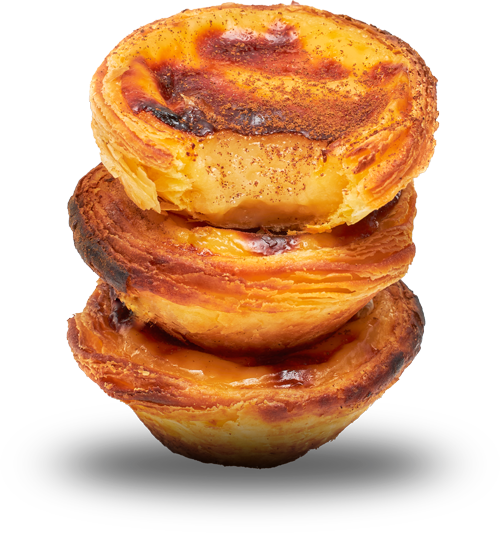Pastéis de Nata are a well-known traditional portuguese delicacy. They are small pastries with a puff pastry base, filled with egg cream, milk and sugar and baked until the pastry is golden and crispy and the filling is creamy and soft.
The popularity of Pastéis de Nata is not limited to Portugal. The unique combination of textures and flavors has won fans all over the world, becoming an internationally renowned icon of portuguese sweets. When you visit Portugal, it’s almost mandatory to try this portuguese treasure!
The origin of Pastel de Nata
It’s very difficult to pinpoint the origin of Pastel de Nata, but the first record of a very similar sweet dates back to the 16th century in the Cookery Book of Infanta D. Maria, granddaughter of King Manuel I, who couldn’t have imagined that her recipe for “Pastéis de Leite” would be the beginning of Portugal’s gastronomic saga around the world.

There are also records of similar recipes in convents and monasteries in various parts of the country during the 17th and 18th centuries, a time when they were dedicated to producing a diverse range of pastries and sweets. These were egg-based, using the yolks left over after using the whites to iron clothes and in the wine production process. Among this range of pastries and sweets are recipes similar to what we know today as Pastel de Nata. Over time, these recipes underwent changes until they arrived at the recipe we know today as Pastel de Nata.
The first written reference to the name Pastel de Nata and the recipe closest to current’s, was recorded for the first time in the convent of Odivelas, in the notebook of the Abbess D. Bernardina da Conceição (who died in 1866). In this notebook, the first page is dedicated to Pastéis de Nata and presents two versions: a version to serve hot and another cold.
With the expulsion of the religious orders and the closure of many convents and monasteries in the aftermath of the Liberal Revolution of 1820, the Pastel de Nata recipe left the convents and became an ex-libris of Portuguese confectionery.



